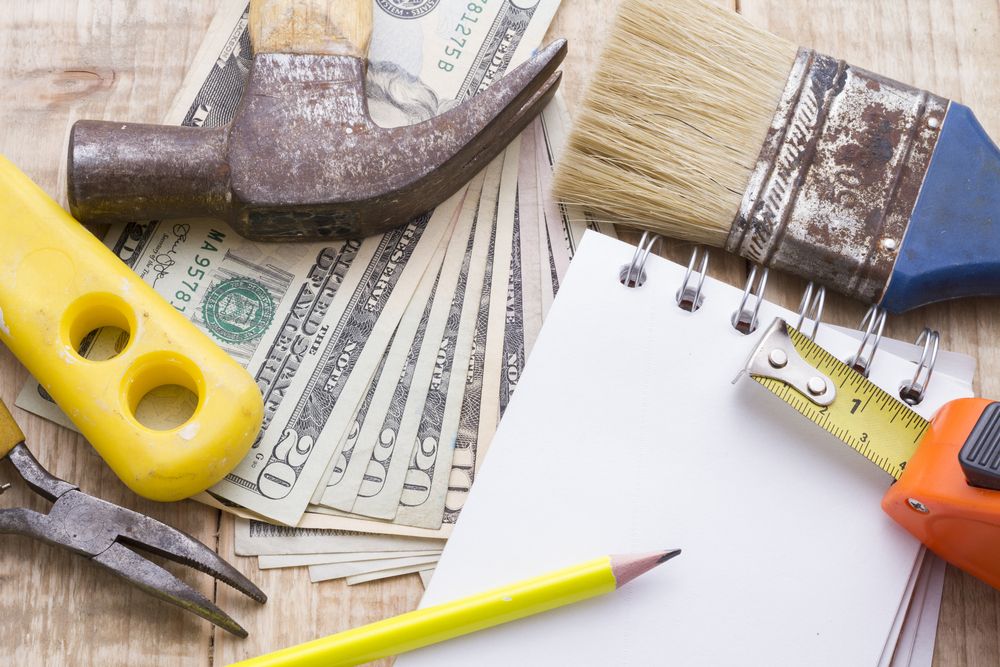Undertaking home improvement projects can be an exciting venture for homeowners eager to enhance the value and appeal of their living spaces. However, navigating the financial aspect of these projects can pose challenges. Many face the dilemma of wanting top-notch results without breaking the bank. Fortunately, stretching your home improvement budget without compromising on quality is entirely possible with strategic planning and informed decision-making.
Prioritize Your Projects
Before embarking on any home improvement endeavor, it is crucial to discern which projects hold the most value—both in terms of enhancing your living experience and adding to your home’s overall market worth.
To start, make a list of desired upgrades and categorize them based on necessity and potential return on investment. While some renovations significantly increase a property’s resale value, others simply improve daily comfort. Kitchen and bathroom renovations are among the top home upgrades that add substantial value, often yielding a return of 70–80% or more on investment. If these areas need attention, they should be prioritized.
Additionally, structural repairs and essential maintenance should come before cosmetic upgrades. A new paint job or stylish décor won’t make up for a leaky roof, faulty wiring, or outdated plumbing. Ensure your home is structurally sound before spending money on aesthetic improvements.
For those planning to sell their homes in the near future, it’s also worth researching which upgrades increase property value in your specific market. Some improvements may be highly sought after in one area while being unnecessary in another.
Create a Realistic Budget
Establishing a well-thought-out budget serves as the backbone for successful home improvement planning. Begin by researching the average costs associated with each project, including materials, permits, labor, and potential unexpected expenses.
Break your budget down into categories such as:
- Materials – Flooring, paint, fixtures, etc.
- Labor – Contractors, electricians, plumbers, etc.
- Permits & Inspections – Required by local municipalities for certain projects.
- Contingency Fund – Always allocate at least 10-20% extra for unexpected costs.
By setting a clear spending limit, you reduce the risk of going over budget. Many homeowners underestimate expenses, which leads to financial strain mid-project. A realistic and well-structured budget helps prevent unnecessary surprises.
Use DIY Tactics Where Possible
One of the best ways to save money on home improvement projects is to take a hands-on approach. Do-it-yourself (DIY) tasks significantly cut down labor costs, allowing homeowners to allocate funds toward better materials or additional upgrades.
Tasks Ideal for DIY:
- Painting walls and cabinets – A fresh coat of paint can dramatically transform any space.
- Installing backsplashes – Peel-and-stick tiles make this an easy project.
- Landscaping and gardening – Planting trees, flowers, and shrubs improves curb appeal.
- Assembling furniture and shelving – DIY furniture kits are cost-effective alternatives to store-bought pieces.
However, be realistic about your skill set. While small projects are great for beginners, electrical work, plumbing, and structural changes should be left to professionals to avoid costly mistakes and safety hazards.
Source Affordable Yet Quality Materials
Many assume high-quality home renovations require expensive materials, but this isn’t always the case. With careful sourcing, you can find durable, stylish, and cost-effective alternatives without sacrificing quality.
Where to Find Budget-Friendly Materials:
- Reclaimed materials – Salvage yards, online marketplaces, and demolition sales offer materials such as wood, bricks, and fixtures at low prices.
- Surplus stores – Home improvement surplus outlets sell discounted materials left over from bulk orders.
- Factory direct purchases – Some manufacturers sell direct-to-consumer, eliminating retail markup.
- Discounted flooring & cabinetry – Many home improvement stores have clearance sections with steep discounts on overstocked items.
When selecting materials, compare prices from multiple sources before making a final purchase. This ensures you’re getting the best possible deal.
Get Multiple Quotes from Contractors
Hiring professionals is often necessary for complex renovations, but contractor pricing can vary significantly. Always get at least three quotes before committing to a service provider.
When evaluating quotes, look beyond just the price. Assess factors such as:
- Reputation and customer reviews.
- Experience with similar projects.
- Warranties on work completed.
- Timeline for project completion.
A slightly higher-priced contractor with a strong track record may ultimately save you money in the long run by providing higher-quality work that doesn’t require costly corrections later.
Consider Phased Remodeling
If your budget doesn’t allow for a complete renovation all at once, consider breaking the project into phases. This approach makes costs more manageable while still allowing gradual improvements over time.
Example of Phased Remodeling for a Kitchen:
- Phase 1: Upgrade lighting fixtures and repaint walls.
- Phase 2: Replace countertops and backsplash.
- Phase 3: Install new appliances as finances allow.
- Phase 4: Refinish or replace cabinets.
This staggered approach prevents financial strain while still achieving your desired outcome.
Opt for Simple Design Changes
Sometimes, small and affordable design tweaks can have a big impact without requiring extensive renovations.
Low-Cost Upgrades That Transform a Space:
- New cabinet hardware – Modern handles and knobs give kitchens and bathrooms a fresh look.
- Peel-and-stick wallpaper – Ideal for accent walls without the permanence of paint.
- Updating light fixtures – Swapping outdated lights for modern ones creates a contemporary ambiance.
- Rearranging furniture – A new layout can make a room feel brand new.
Bid for Discounts and Negotiate Prices
Many people overlook the power of negotiation when shopping for home improvement materials and services. Always ask if discounts are available—you’d be surprised how often suppliers and contractors are willing to lower prices or offer promotions.
Some stores offer:
- Bulk purchase discounts.
- Price matching with competitors.
- End-of-season sales with clearance items.
For larger purchases, consider negotiating a better deal—especially if you’re buying in bulk or bundling multiple services from one provider.
Repurpose Existing Features
Instead of replacing expensive items, consider repurposing what you already have.
Examples include:
- Refinishing hardwood floors instead of replacing them.
- Repainting or refacing cabinets instead of buying new ones.
- Using salvaged wood for floating shelves or accent walls.
Creative repurposing not only cuts costs but also adds unique character to your home.
Energy Efficiency as a Cost-Saving Measure
While energy-efficient upgrades may have higher upfront costs, they lead to substantial long-term savings on utility bills.
Consider:
- LED lighting – Uses 75% less energy than traditional bulbs.
- Programmable thermostats – Adjust temperature settings to reduce energy use.
- Energy-efficient windows – Reduce heating and cooling costs year-round.
- Solar panels – May qualify for tax credits and rebates.
These investments pay off over time and enhance home value.
Project Management and Timing
A well-managed renovation stays on schedule and within budget. Some tips include:
- Using a spreadsheet or budget app to track expenses.
- Setting clear deadlines and milestones for each phase.
- Scheduling work during off-seasons when contractors may offer discounts.
Avoid delays by ensuring permits are secured ahead of time and that all materials are ready before beginning construction.
Stretching your home improvement budget requires a combination of smart planning, resourcefulness, and strategic spending. By prioritizing projects, sourcing cost-effective materials, and utilizing DIY skills where possible, you can achieve high-quality results without exceeding your budget.
Whether you’re making minor updates or embarking on a full-scale renovation, these tips will help you create a beautiful and functional home while keeping finances in check.



